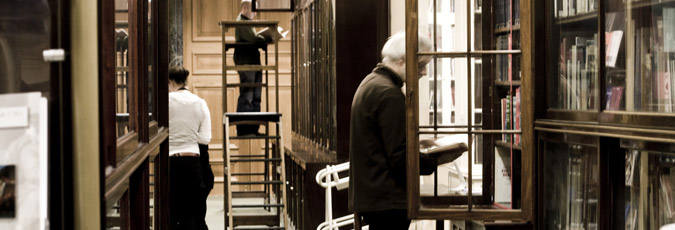A consortium of the National Gallery and the Bowes Museum has been awarded three doctoral studentships per year over four years as part of the Arts and Humanities Research Council (AHRC) Collaborative Doctoral Partnership scheme. Each institution is able to offer studentships in partnership with higher education institutions, to enable students to study for a PhD at a UK university.
The National Gallery and the Bowes Museum have substantial synergies in their research interests, which arise not only from the fact that they both hold significant collections of Old Master paintings, but also from shared interests in the research themes:
- Buying, Collecting, Display. This strand concentrates on the histories of the art market, as well as of picture collections and the tastes, economics and politics that lay behind them. It also concerns audiences for art (including museum visitors today) and the histories of the institutions themselves. It provides a context for collections that supports new approaches for presentation to the public.
- The Meaning of Making. This strand seeks to use object-based research, combining the disciplines of art history, science and conservation, to contextualise technical study of collections by situating it within a larger art historical discourse, investigating notions of authorship, collaboration, copying, design, inspiration and their re-use/reinterpretation over time. It is a distinctive aspect of Museum/Gallery research.
- Art and Religion. This strand focuses on the iconography, functions and context of Christian art. A high percentage of works in collections of Western European art are of religious subjects, nearly all of them Christian, reflecting the fact that, after classical antiquity, Christianity became the predominant power shaping European culture between the 13th and 19th centuries. The research addresses how and why these sacred works of art were made, to explore what they might have meant to their original viewers and to discover what they mean to beholders today.
The consortium builds on these common interests that are shared between the National Gallery and the Bowes Museum as well as more generally in many museums, galleries and HEIs. For the National Gallery, the consortium is also an important element in the Gallery’s national strategy.
The specific themes above are not intended to be prescriptive but they serve as an effective expression of the consortium’s areas of interest, giving a framework for collaborations with HEIs and other research organisations, and for potential shared studentships within the consortium.
For general information, find out about the scope of research at the National Gallery and the Bowes Museum.
Each studentship will be jointly supervised by a member of the consortium partner’s staff and an academic from a UK Higher Education Institution (HEI). The HEI administers the studentship, receiving funds from the AHRC for fees and to cover the student’s maintenance. The consortium partner provides additional financial support to cover travel and related costs in carrying out research.
More information about Collaborative Doctoral Awards is available on the AHRC website
Information for universities:
Proposals for new studentships are developed by National Gallery or Bowes Museum staff (as co-supervisors) together with a named university partner (as principal supervisor) and are chosen on their academic strengths and clear support for the National Gallery’s or the Bowes Museum’s research objectives. We welcome expressions of interest and project ideas from any UK university.
For more information about partnering with the National Gallery, advice on potential internal collaborators and guidance for applications contact Marika Spring, headofresearch@ng-london.org.uk.
For more information about partnering with the Bowes Museum, advice on potential internal collaborators and guidance for applications contact Adrian.jenkins@thebowesmuseum.org.uk.
Information for students:
Details of the next round of CDP projects and how to apply will appear here in early 2020.

